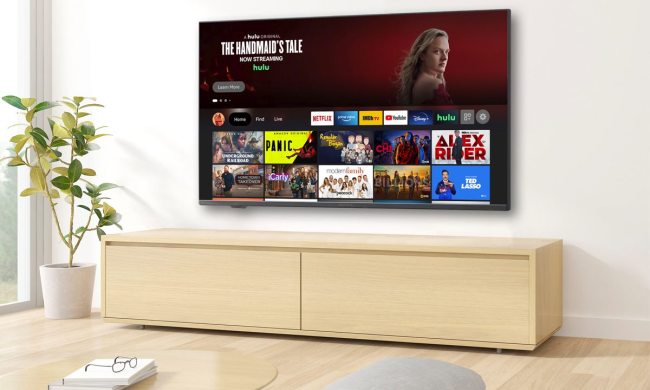
- Excellent sound
- Dynamic Ortofon 2M Red cartridge
- New speed selection dial
- Solid acrylic platter
- Optional built-in preamp
- Seven finishes
- No auto stop feature
I’ve always been impressed with U-Turn Audio’s lineup of affordable Orbit turntables that it started making in 2012. Over the following decade, the Orbit earned a reputation for being a no-nonsense record player that looks good, is simple to operate, and is made with good components — you could even mix and match them to suit your needs and budget, which made the line appealing to a wide range of vinyl enthusiasts, including myself.
So, when U-Turn launched its 2nd-gen Orbit lineup last fall — the first major upgrade in the company’s history — I was excited to get my hands on one. That time has come. The entire Orbit range, which includes the Orbit Basic, Plus, and Special, has been revamped. U-Turn has furnished me with both ends of the range, the Basic and Special, but this review will focus on the latter.
Taking more than a few pointers from its premium-range Orbit Theory turntable that U-Turn successfully launched in late 2022, the upgrades to the 2nd-gen Orbit Special have made it a near perfect midrange turntable that is a joy to use. With a redesigned tonearm, upgraded motor and spindle, new grooved acrylic platter, some fresh new finish options, and (gasp!) an electronic speed control dial, every issue I ever had with the first-gen Orbit Special (one of my daily drivers since 2018) has been obliterated. Ranging in price from $549 to $749, depending on how you configure it, the Orbit Special remains a great value. The revamped Orbit special takes an excellent turntable and makes it even better. Here’s how.

U-Turn Orbit Special: setup
Like many modern turntables worth buying, the U-Turn Orbit Special comes well packed and protected, with only a few key parts that have to be assembled and set up. It’s all pretty easy, though, and it comes with all the instructions you need, whether you’re new to it or a pro.
In the box, you’ll find the main plinth with the tonearm already mounted and its cartridge (the superb Ortofon 2M Red) already installed and prealigned. All you have to do is follow the instructions for mounting and balancing the turntable’s counterweight (it’s easy), place the acrylic platter on the spindle, and wrap the silicone-rubber belt along its new machined groove and around the motor. It should all take about 10 minutes, and it’s kinda fun.
The Orbit Special is a near-perfect midrange turntable that is a joy to use.
The power adapter and RCA cables are included, and depending on whether you sprung for the built-in phono preamp (more on that later) or not, you just have to connect up to your receiver/amplifier or a set of powered speakers and you’re off. Oh, and it comes with a solid dust cover that installs on two plastic hinges at the back of the plinth. It works well, too, and doesn’t fall closed under its own weight, like others I’ve tried.
U-Turn Orbit Special: features and operation
I meant it when I said no nonsense. My digital-loving colleague, Simon Cohen, likes to rib us with the word “antiquated” when describing turntables and their associated polyvinyl media, but I think there’s a beauty in their simplicity. The U-Turn Orbit Special (or any member of the Orbit line, for that matter) isn’t big and bulky, with the plinth measuring just three-quarters of an inch thick. It’s made of either MDF, solid walnut, or, like my review unit, a beautiful and natural oak, not veneer.
All models come with U-Turn’s anti-resonant acrylic platter, which tops the turntable’s weight out at around 15 pounds. It fits in nicely with most decors, and unless you opt for one of the bolder colors like green, red, or blue, it won’t be an eyesore.
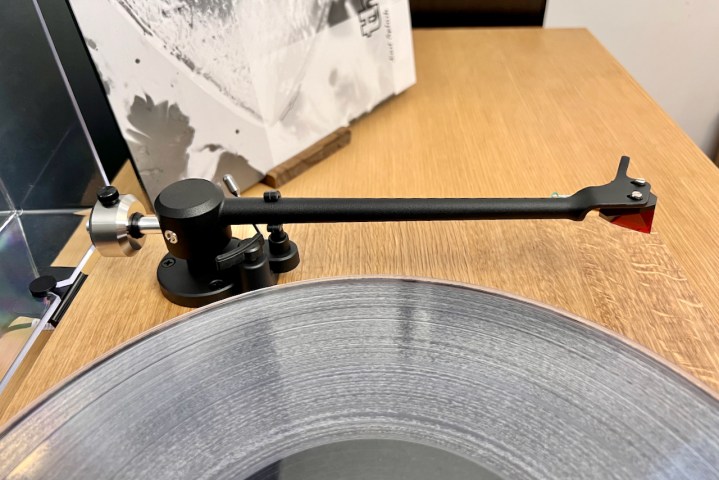
Orbit two point oh!
With the upgrades to the range, the Orbit gets a new, single-piece molded magnesium tonearm that is a version of the OA3 Pro “precision” tonearm that the company put on its $1,000-plus Theory turntable (minus the “Pro” designation). It’s sleeker and lighter than the aluminum version of the first-gen Orbit, and the single-piece design combining the headshell, armtube, and pivot housing translates to greatly reduced resonance and vibration transfer that would have been happening between the assembly points of the old model’s parts. Plus it’s black and just looks way slicker.
The 2nd-gen Orbit Special didn’t get the Theory’s numbered counterweight dial or adjustable anti-skate though (it’s internal on the Special), but if I’m honest, I’ve never actually had the use for either after setup and it operates flawlessly. The first-gen Orbit didn’t have this either, and even after switching cartridges several times, recalibrating the counterweight and tracking force is a little trickier, but still easy.
But hands down my two favorite updates to the Orbit Special are the new grooved platter, which keeps the belt secured and in place, and the addition of the speed control dial that lets you easily switch between 45 and 33 1/3 RMP speed selections with a turn of a knob mounted on the front left of the plinth, replacing the old on/off switch.
- 1. The new speed dial
- 2. Gimbal and counterweight assembly
- 3. New grooved platter
- 4. Upgraded motor
Both are welcome features also adopted from the Theory, and it’s about time. All of U-Turn’s record players are belt driven, and manually switching speeds by physically moving the belt from one part of the motor to another is a pain — the belt falls off and can be touchy to get back on. It also gets stretched out and I’ve had to replace them over the years.
The speed dial works excellently, the new motor has more torque and gets the record up to speed much faster than before, and when I run my antistatic brush around, the pressure no longer stops the record. Too bad they didn’t just put it on the entire Orbit line — the Basic and Plus models are out of luck.
To pre or not to pre
The Orbit Special starts at $549 in the five basic colors of black, white, red, blue, and green (add $170 for oak or walnut), and without the built-in phono preamp, which is fine if you already have a receiver or amplifier with a phono input or an external phono preamp (aka a phono stage) of your own. For $80 you can add U-Turn’s built-in phono stage, an internal version of its capable Pluto 2 preamp that runs $109 if you get it on its own. I’ll get into the performance of the preamp below.
U-Turn Orbit Special: Sound and performance
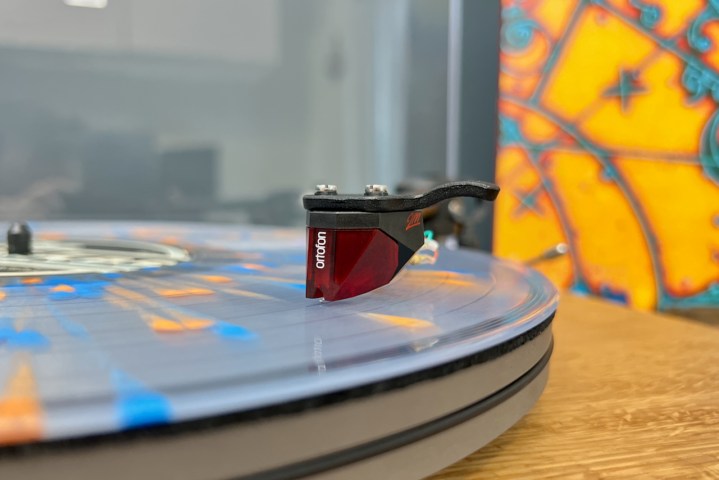
I’ll start by saying that the Orbit Special’s light weight and built-in preamp made it easy to move around and connect to the variety of audio setups I have around the house, including an old Marantz 2230 with almost-as-old Mission 727 speakers, a modern Cambridge CXA81 integrated amp with Wharfedale bookshelf speakers, and then directly to a set of great Edifier powered speakers.
Overall, the sound of the revamped Orbit Special is gorgeous. It’s clear and deathly quiet when playing low-key, sentimental tracks from acts like Boygenius and Elliot Smith; it ramps up with ease with a detail and spacious soundstage when spinning mid-volume tracks from Miles Davis or Peoria Jazzband; and then just fills the room with sound when I threw on a sweet 180-gram splatter pressing of The Strokes’ Is This It that the folks from were nice enough to send me.
With this next-gen Orbit Special, U-Turn has another hit on its hands.
The Ortofon 2M Red does its job nicely, delivering smooth and controlled bass (it loves it some Thundercat), punchy and tidy mids (it ate up The Breeders’ 30th anniversary edition of Last Splash), and articulate highs (Portishead’s creepy Humming gave it a workout). Honestly, put up next to the U-Turn Orbit Theory, they’re so close that I’d question that extra $300 if it weren’t for the additional detail and refinement of the latter’s Ortofon 2M Blue cartridge, which you could upgrade to on the Orbit Special for $159; all you’d need is the stylus as it’s interchangeable. It’s something to think about.
I also tested the Orbit Special by comparing the built-in preamp to a quality external Schiit Mani phono pre, as well as through the phono input of the Marantz receiver. I can report that I actually preferred the built-in over my beloved Marantz as it added a bit of a level boost and some excitement and clarity to the mids and highs. I found it pretty comparable to the Mani, though, so that extra $80 for the built-in is well worth the money.
Switching to and from 33 and 45 RMP was a delight with the speed dial, and operationally, the Orbit Special is a lot of fun to play records on. The original Orbit Special was an excellent turntable, but with this next-gen Orbit Special, U-Turn has another hit on its hands.
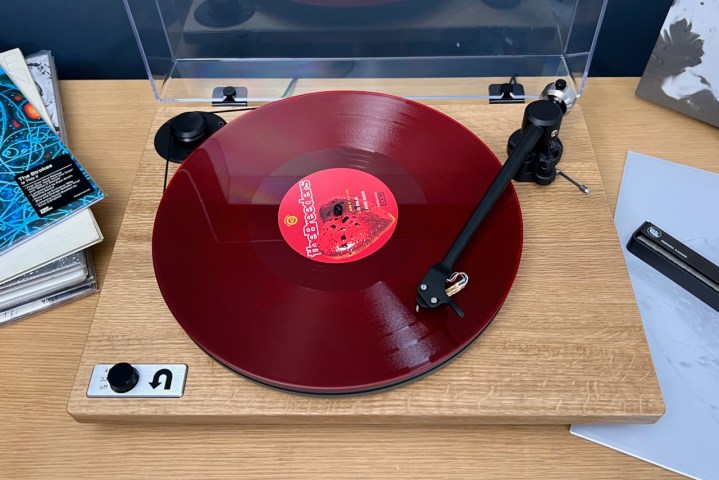
U-Turn Orbit Special: Bottom line
I’ve spent quite a number of hours with the Orbit Special, and all I can say is that U-Turn has done it again. The upgrades have elevated its usability to sit almost on par with its premium offering, the Orbit Theory, and for hundreds of dollars less. Its low-noise operation can largely be attributed to the new OA3 and tonearm, quiet belt-driven motor, and anti-resonant acrylic platter, while the Ortofon 2M Red handles all that expressive and detailed sound. And as I talked about above, the Ortofon cartridge it comes with allows you to upgrade the stylus to Ortofon’s next-up Silver ($120) or the Blue ($159) at the top of its range.
Key upgrades like the addition of electronic speed control and grooved platter edge for keeping the belt assuredly in place have made the Orbit Special that much easier and more fun to play records on. U-Turn also has excellent customer service, which goes a long way should anything go wrong.
The Orbit Special’s diversity and $549 starting price make it a good choice for beginners, but those who’ve been at it for a while or have deeper pockets will also appreciate the additional finishes and optional built-in preamp that top the price out at $749, an investment that will last you for years.
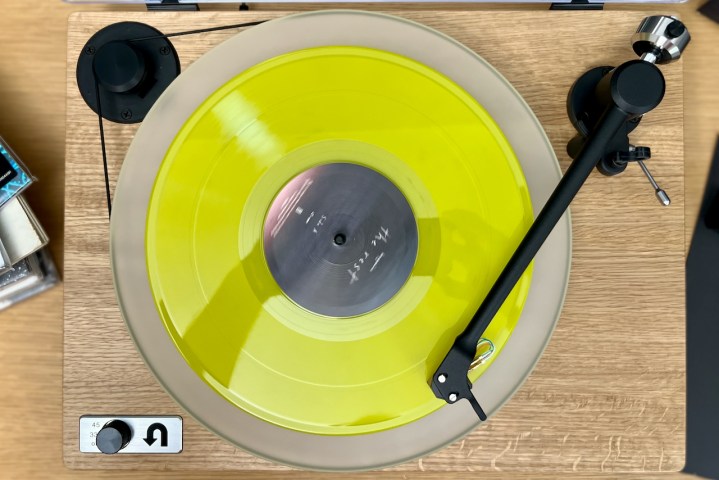
If you’re still in the research phase, close competitors to the Orbit Special include the $600 Pro-Ject Debut Carbon EVO or the outstanding $595 Rega Planar 1. The Pro-Ject features the solid-performing Sumiko Rainier cartridge, while the Rega is, well, Rega, and its Carbon cartridge is highly rated. But both lack internal preamp options and the Rega only comes in three finishes. Both have amazing pedigree, though, and it’s nice to see U-Turn going toe-to-toe with these big players.







